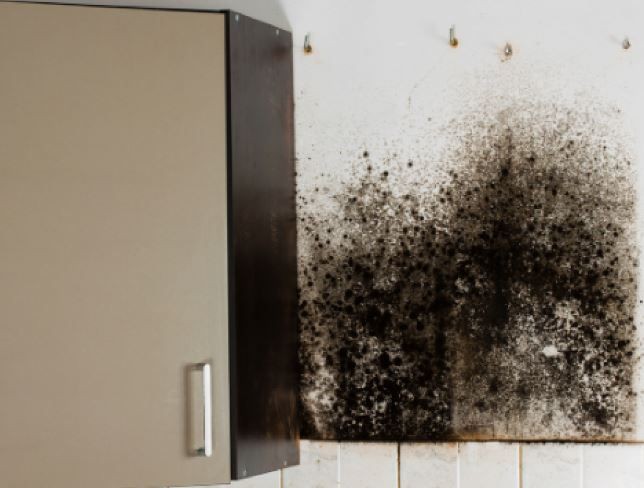Introduction
Mold growth in houses is a common concern that can lead to various health issues and property damage if not addressed promptly. Testing for mold in your house is crucial for early detection, assessing potential risks, and implementing effective remediation strategies. This article explores why mold testing is important, the different testing methods available to homeowners, when to test for mold, interpreting test results, and steps for remediation if mold is found.
Why Mold Testing is Important
Health Risks of Mold Exposure
Mold releases spores into the air that can cause allergic reactions, and respiratory problems, and exacerbate asthma symptoms in sensitive individuals. Prolonged mold exposure may lead to more severe health issues. Testing for mold helps identify the presence of mold spores and determines the severity of contamination, enabling homeowners to take necessary actions to protect their health.
Preventing Property Damage
Mold growth can damage building materials, weaken structural integrity, and cause costly repairs. Testing for mold in house allows homeowners to detect hidden mold growth behind walls, under flooring, or in attics before it spreads extensively. Early detection helps mitigate property damage and reduces the likelihood of extensive remediation efforts.
Methods for Testing Mold in Your House
Visual Inspection
A visual inspection is the first step in identifying potential mold problems. Homeowners can inspect visible areas for signs of mold growth, such as discoloration, water stains, or musty odors. Pay attention to damp or humid areas like bathrooms, basements, and kitchens, as well as areas with recent water damage.
Air Sampling
Air sampling measures the concentration of mold spores in the air. Homeowners can use air sampling kits or hire professionals to collect air samples from different rooms in the house. Samples are analyzed in a laboratory to identify the types and levels of mold spores present. Air sampling helps determine indoor air quality and assesses the extent of mold contamination.
Surface Sampling
Surface sampling involves collecting samples from suspected mold-infested surfaces using swabs or tape lifts. Homeowners or professionals can send samples to a laboratory for analysis to confirm the presence of mold and identify specific mold species. Surface sampling provides detailed information about the location and extent of mold growth on surfaces.
When to Test for Mold
Before Buying a Home
Testing for mold is recommended before purchasing a home, especially if there are signs of water damage, musty odors, or visible mold growth. A professional mold inspection can identify existing mold issues and assess potential risks for future homeowners.
After Water Damage
After experiencing water damage from leaks, floods, or plumbing issues, testing for mold is essential. Moisture promotes mold growth within 24-48 hours, making prompt testing and remediation critical to prevent mold from spreading.
Suspected Mold Problems
If you notice signs of mold growth, such as discoloration, musty odors, or health symptoms related to mold exposure, testing should be conducted promptly. Identifying the presence of mold allows homeowners to address the problem before it worsens.
Interpreting Mold Test Results
Understanding Mold Reports
Mold test results provide information about the types and concentrations of mold spores present in the air or on surfaces. Interpretation of mold reports requires understanding the significance of mold species, spore levels, and potential health risks associated with exposure.
Acceptable Levels of Mold
There are no standardized acceptable levels of mold spores in indoor environments. However, elevated mold spore counts compared to outdoor levels or specific mold species known to cause health issues may indicate a mold problem requiring remediation.
Steps for Remediation if Mold is Found
Hiring Professional Remediation Services
If mold testing confirms the presence of mold, homeowners should consider hiring certified mold remediation professionals. Remediation companies follow industry guidelines and use specialized equipment to safely remove mold and prevent recurrence.
Containment and Removal
During mold remediation, professionals contain affected areas to prevent mold spores from spreading to clean areas. They use HEPA filters, negative air pressure, and protective gear to safely remove mold-infested materials and clean affected surfaces.
Addressing Moisture Issues
To prevent mold recurrence, homeowners should address underlying moisture issues that contribute to mold growth. Fixing leaks, improving ventilation, and reducing humidity levels in bathrooms, kitchens, and basements can help maintain a dry and mold-free environment.
Conclusion
Testing for mold in your house is essential for safeguarding health, protecting property, and ensuring a safe indoor environment for occupants. By understanding the importance of mold testing, available testing methods, when to test for mold, interpreting test results, and steps for remediation if mold is found, homeowners can effectively manage mold issues and prevent potential health risks and property damage. Investing in professional mold testing and remediation services promotes peace of mind, enhances indoor air quality, and preserves the integrity of residential properties. Regular maintenance and proactive measures help homeowners maintain a healthy living environment free from mold contamination.
Keep an eye for more news & updates on Hint Insider!




